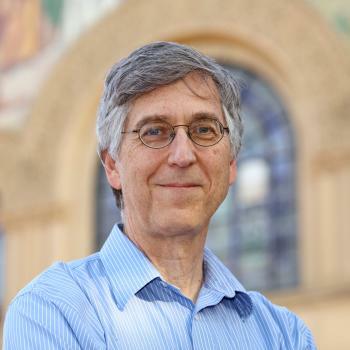Main navigation
Greetings from Stanford's Department of Electrical Engineering!
We are the largest department within the School of Engineering, with 60 active faculty, and more than 1,000 PhD, MS, and BS students. Each year, more than 250 students earn Electrical Engineering degrees.
We Are Scholars
Throughout our long history (2019 marked our 125th anniversary), our faculty have received some of the highest honors and awards for their research and teaching. We have set the tone for technology around the world, from the invention of microprocessors, public-key cryptography, and MIMO wireless technology. Our faculty have received a multitude of awards, including the Nobel Prize, three Turing Awards, the National Medal of Science, the Ho-Am Prize, five IEEE Shannon Awards, three Marconi Awards, three IEEE Hamming Awards, two Academy Awards, and induction into the National Inventors Hall of Fame. Eighteen current faculty are members of The National Academy of Engineering (NAE), and two are foreign members of Chinese Academy of Engineering (CAE). Current faculty have a combined Google Scholar citation count exceeding one million.
We Are Interdisciplinary
The application of EE techniques across disciplines is growing rapidly. Of our 60 active faculty, 25 are joint with other departments, including computer science, statistics, material science & engineering, management science & engineering, aeronautics & astronautics, earth sciences, radiology, and SLAC.
Today, nearly every manufactured product, from cars and refrigerators to phones and medical devices, includes electronic circuits, uses signal‐processing algorithms, and is linked to a network. These innovations have originated from research that forms the intellectual core of the department.
We build upon and apply EE techniques to basic sciences, addressing major societal challenges. Our interdisciplinary research includes biomedical and energy projects, including neural prosthetics, wirelessly powered implants, biosensors, solar cells, thermoelectric devices, and the smart grid. Read about EE Research Areas.
We are the Heart of Silicon Valley
The history of Silicon Valley traces back to the Stanford Electrical Engineering department. We continue to work closely with industry while encouraging entrepreneurial innovation. In fact, EE students, faculty & alumni have started an astonishing array of startup companies. Throughout campus, several institutes and centers provide opportunities for students to perform interdisciplinary research that extends beyond the scope of any one of the university's organized schools. We are very proud of our innovative history and excited to discover future directions for entrepreneurship and electrical engineering.
Degree Programs
We offer five full- or part-time graduate programs, including joint degrees, and non-degree options. Doctoral students from any other Stanford department may apply to earn an EE M.S. degree. Conversely, 30% of our PhD students have co-advisors from other departments. Undergraduate students can choose from several disciplinary areas for their B.S. degree. Undergraduates may also apply for a coterminal degree, earning both the B.S. and M.S. in an accelerated time frame. Read about EE Academic Programs.
Joining Stanford EE as a student
We offer a broad and innovative set of research programs, supported by state-of-the-art research equipment and diverse classes. Students choose from nearly 200 courses each academic year. Each quarter, a variety of informative and unique seminars are held, averaging 2 per day. At Stanford, you will receive one of the world's best educations. You will connect and build lifelong friendships with peers, faculty, and staff from around the world.
Electrical Engineering labs, offices, and student lounges are primarily located in four buildings: Packard Electrical Engineering, Gates Computer Science, Allen Building, and Spilker Building. EE is centrally located between the School of Medicine, biology, physics, and the Chem-H And Wu Tsai Neurosciences Institute. We are uniquely and intentionally positioned for collaborative projects with many other departments and schools. Within Packard Electrical Engineering and the Science and Engineering Quad, you'll find cafes and collaborative spaces to relax, refresh, and find inspiration. EE Affiliates, Lab Facilities and Institutes.
Please browse our website, learn more about us, and contact us with any questions. If you are joining us as a student, we look forward to your contributions to both the department and to electrical engineering as a discipline. We hope to be part of your success.
Mark Horowitz
Fortinet Founders Chair of Electrical Engineering
Yahoo! Founders Professor in the School of Engineering
Professor of Electrical Engineering
Professor of Computer Science
